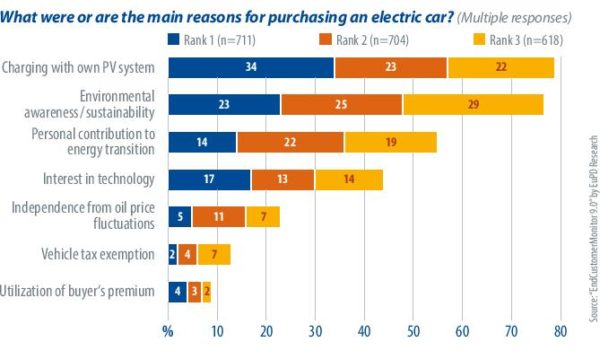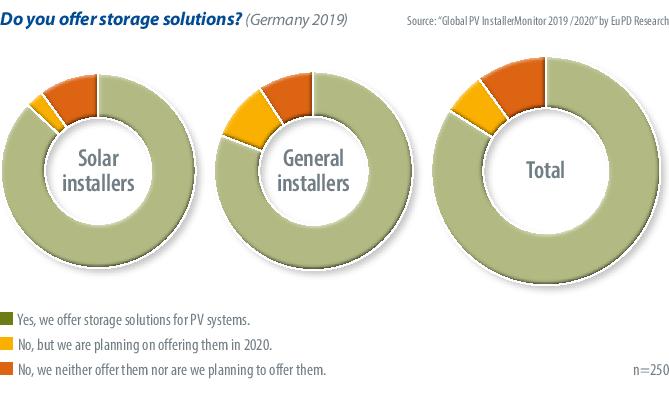From pv magazine 08/2020
The feed-in tariff scheme was an amazing way to promote photovoltaics; The idea of generating clean energy and getting paid for it still sounds amazing. Unfortunately, tariffs have since plummeted throughout Europe, which makes a tough business case for PV. Nearly all turned toward Germany for new learnings, and there was a silver lining on the horizon: energy storage.
This time the plot seemed even more exciting: Generate clean energy, consume it yourself, and become independent of utilities and increasing electricity prices. The various incentive schemes, such as the Kreditanstalt für Wiederaufbau (“Credit Institute for Reconstruction”) plan, were good vehicles to get energy storage off the ground in Germany. Further increases in electricity prices and declining system costs contributed to the growth of this segment. This year, the first PV systems in Germany will be dropping out of the feed-in tariff scheme, which will open up the market for retrofit storage installations over the years. Recently, the German government decided to abolish the 52 GW solar cap, which was viewed by stakeholders, installers, and end-customers as a massive threat to further development of PV, and subsequently, energy storage.
Now once again we are looking at a level playing field, and are excited to see how the solar+storage landscape in Germany will further evolve. The industry is in part carried by PV developers, who are the key intermediary when it comes to installing PV and storage solutions. Germany is the largest European market for energy storage, also because around 84% of all German installers already carry energy storage in their portfolio, based on our annual survey of PV installers, Global PV Installer Monitor 2019/2020.
Furthermore, an increasing number of homeowners are installing PV with storage to further improve their rate of self-consumption, and other business models are also pushing the industry. The growing demand for personal charging infrastructure for electric vehicles is driving the market for solar energy. In a recent survey by EuPD Research, the majority of German households stated they want to purchase an electric car to be able to charge it with their self-generated PV electricity.

When feed-in tariffs in other European markets started plummeting, eyes turned to the pioneer market for clues; however, Germany doesn’t have all the answers. In the United Kingdom, for instance, it very quickly became clear that energy storage would need longer to get started, with electricity prices that are considerably lower than in Germany. The government’s commitment toward nuclear energy, such as the Hinckley Point C power station, further dampens the outlook for renewable energy in the United Kingdom.
However, energy storage in other countries could quickly become a viable option to push the European market. In terms of deployment, Belgium and the Netherlands are highly appealing. Both countries are characterized by a steadily growing residential market, and for the last few years, the Netherlands was Europe’s largest market for PV systems below 10 kW in (together with Germany). However, at first sight, the net-metering schemes in both countries seem to contradict energy storage as a business model.
Fortunately, both countries are planning to phase out net-metering in favor of feed-in tariff schemes. While the Netherlands seems to be struggling with implementing the FIT, Belgium is already a step further along, and has introduced a €3,200 subsidy for storage installations. Major manufacturers such as Sonnen have already announced they will be offering their storage systems in Belgium. Furthermore, residential electricity prices in Belgium are among the highest in Europe, behind only Denmark and Germany – which reinforces a promising business case for energy storage. But currently, just 16% of installers surveyed in Belgium offer energy storage solutions to their customers. As previously mentioned, a large share of installers must carry storage systems in their portfolio for the technology to take off – let’s hope installers will appreciate the value of these technologies once framework conditions have improved.
In general, energy storage will become a major factor in the European energy transition over the next few years. The industry will greatly benefit from increased self-consumption and dwindling subsidies, secondary-use concepts for PV systems no longer benefiting from feed-in tariffs, and the electrification of the heating and mobility sectors. And perhaps most importantly, from a strong network of installers that will carry the technology to end-customers.
 About the author
About the author
Saif Islam is a research consultant and senior analyst at EuPD Research. Since joining the team in 2011, Islam has been part of most of the company’s energy and solar PV studies. Working closely with manufacturers and installers, he carries out extensive research projects to provide the market with valuable insights.
This content is protected by copyright and may not be reused. If you want to cooperate with us and would like to reuse some of our content, please contact: editors@pv-magazine.com.



1 comment
By submitting this form you agree to pv magazine using your data for the purposes of publishing your comment.
Your personal data will only be disclosed or otherwise transmitted to third parties for the purposes of spam filtering or if this is necessary for technical maintenance of the website. Any other transfer to third parties will not take place unless this is justified on the basis of applicable data protection regulations or if pv magazine is legally obliged to do so.
You may revoke this consent at any time with effect for the future, in which case your personal data will be deleted immediately. Otherwise, your data will be deleted if pv magazine has processed your request or the purpose of data storage is fulfilled.
Further information on data privacy can be found in our Data Protection Policy.